Dewar’s White Label vs Johnnie Walker Red | An entry-level bottle battle.
Last updated on August 13th, 2024
Whether you prefer single malts, bourbons or blends, it’s easy to get swept away with the hype of ultra high-end whiskies. But for everyday guilt-free sipping, every brand has a workhorse bottle that’ll keep you and your wallet happy.
Yep, I’m talking entry level bottles that don’t break the bank. The whisky equivalent of the family car; a reliable go-to that comfortably fits your needs and gets the job done.
Fitting that bill perfectly are Dewar’s White Label and Johnnie Walker Red Label. Two concrete choices amidst the blended Scotch category. But which one should you choose?
In this blog post, I’ll compare Dewar’s White Label vs Johnnie Walker Red to help you determine which whisky best suits your tastes and budget. I’ll review their smell, taste, finish, style and more so that you can make an informed decision.
So, if you’re deciding between these two bottles, read on to find out which bottle would be perfect for your next low shelf investment.
Quick brand overview
Dewar’s and Johnnie Walker are both blended Scotch whisky brands. Neither produce single malts. Instead they source malt and grain whiskies from various distilleries around Scotland which they use to make their various ages of blended Scotch.
Dewar’s are a blended Scotch whisky brand owned by Bermuda spirits company, Bacardi limited. Their blended whiskies are structured around the Highland single malt from the Aberfeldy distillery in Perth and Kinross, Scotland. Using around 40 different whiskies, they use a variety of other single malts and grain spirits in their blends. Dewars have 6 bottles in their core range; their signature White Label, plus their 12, 15, 16, 18 and 25 year old expressions.
Johnnie Walker is Scotland’s top selling blend, owned by international spirits giant Diageo. Their range is made from single malt and grain whiskies (such as wheat) from all over Scotland. As many as 40 varieties are used for a single blend such as their world-famous Black Label bottle. Balanced and designed to express ‘the 4 corners of Scotland’ their flavours include light Lowlands, smooth Speysides, robust smoky Islays and floral Highland whiskies.
Johnnie Walker has a core range of 7 bottles which are identified via their iconic coloured label system. Red Label is their entry level bottle, accompanied by their Black, Double Black, Green, Gold, 18 and Blue Label whiskies (in that specific order).
Dewar’s White Label vs Johnnie Walker Red
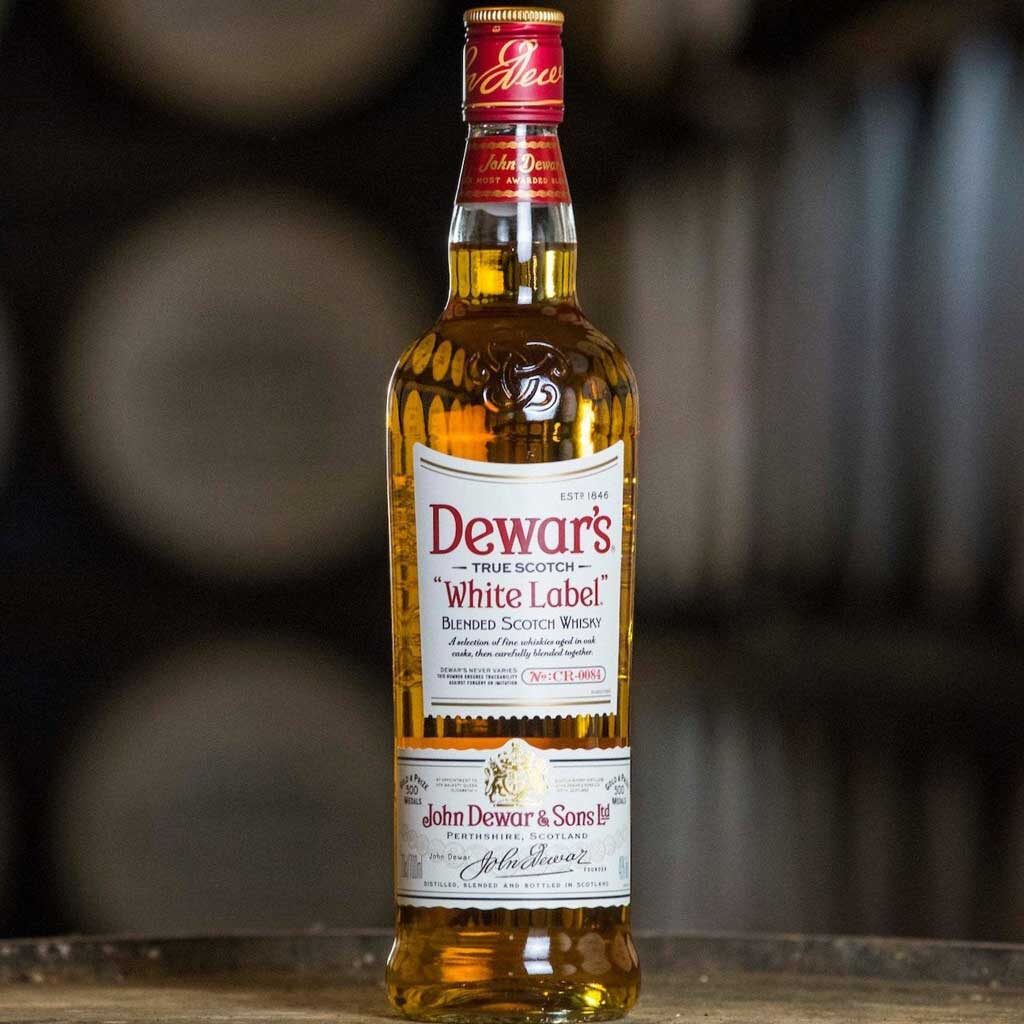
Dewar’s White Label
Nose: Honey, apple, peach & wood
Palate: Honey, fudge, toffee, oak & vanilla
Mouthfeel: Medium-bodied
Finish: Mid to long, herbal & sweet
Age: NAS (3 years, minimum)
Casks: Ex-bourbon & ex-sherry
Strength: 80 proof / 40% ABV
Classification: Blended Scotch
Price: £22 / $27
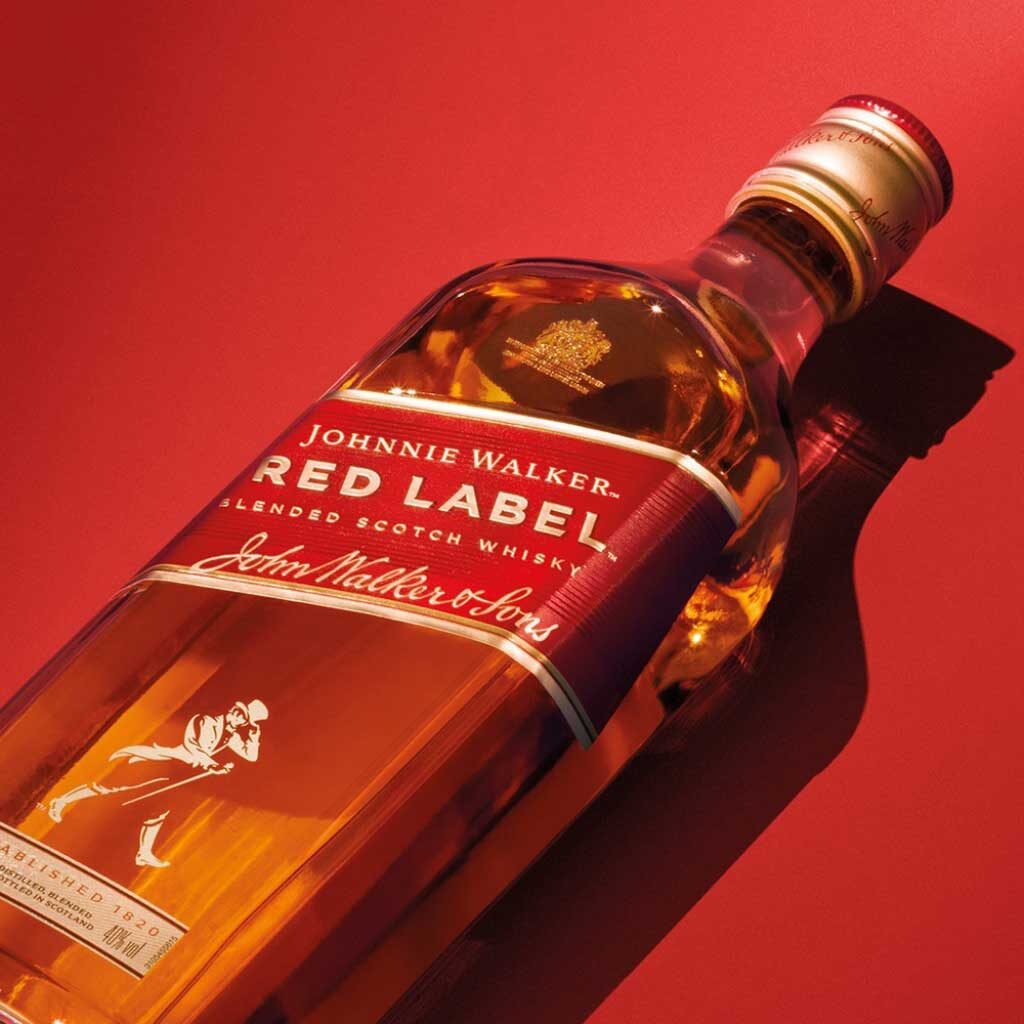
Johnnie Walker Red Label
Nose: Fruit & citrus.
Palate: Sweet, smoky, black pepper & cinnamon.
Finish: Lingering & smoky.
Age: NAS (3 years, minimum)
Casks: Multi casks
Chill filtered: Yes.
Strength: 80 proof / 40% ABV.
Classification: Blended Scotch.
Price: £26 / $29
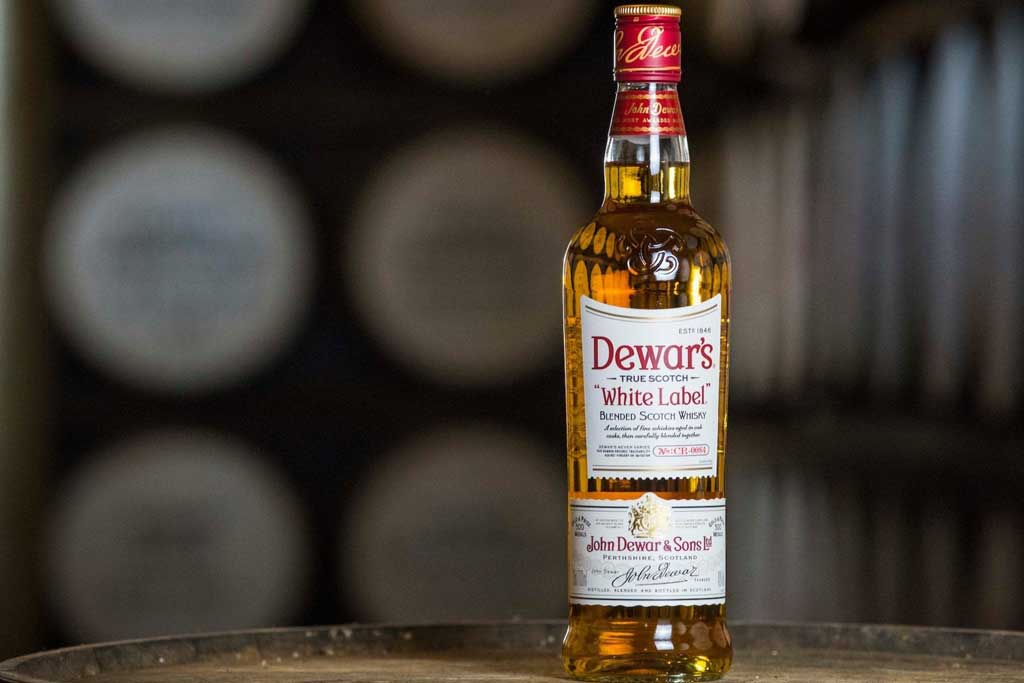
A closer look at Dewar’s White Label
Youngest in their core-range, Dewar’s White Label whisky is their signature blended Scotch. As an entry-level bottle, I’m interested to see how this stacks up against the widely known Red Label from Johnnie Walker (a whisky I’m pretty familiar with from previous reviews.)
Nose: Opening the White Label, it greets you with the obligatory metal screw cap which seems to plague low level blends. (Sorry, I just don’t like the way them feel and sound compared to cork toppers.) In my glass, this whisky has a sweet and inviting aroma with immediate sweet hints. For me, I get wafts of honey, followed by apples and fresh peaches. There’s also a light woodiness.
Amidst the fruity sort of orchard sweetness, I get subtle wisps of cut hay, adding an earthy undertone to the scent. On the nose, Dewar’s provides a pleasing balance between fruity and herbal notes that leads you in.
Palate: On my first taste, this whisky intrigues me. On the front palate, I get sweet hints of vanilla, fudge and a peated smokiness. As I take another sip, I notice notes of toffee, heather honey and oak that linger on my taste buds. The whisky presents its flavours in gradual waves, starting off sweet before transitioning into a more herbal flavour. It’s actually reasonably complex for an entry-level bottle.
Mouthfeel: For me, White Label has a medium body with a light pleasant texture that rolls over the palate. It is not too thin nor too cloyingly sweet and it lingers for a few moments after sipping. There’s just enough warmth from the 40% ABV to make one feel satisfied, without being overpowering or harsh. The whisky has a creamy and very slightly oily mouthfeel that fills the mouth without dominating it. Overall, White Label is smooth and enjoyable to sip on its own or with a mixer. I’m quite happy with it neat.
Finish: The finish of this whisky is a decent length, with a lingering herbal sweetness that stays on the tongue. I find the honeyed sweetness to stand out the most, as it lasts for a few seconds before giving way to subtle hints of cut herbs and mild peat smoke. It’s an easy-drinking whisky that has no rough edges and finishes smooth and light.
Price: Overall, I’m surprised how smooth this whisky is. White Label offers a pleasant balance between sweet and herbal notes that is incredibly moreish. This whisky really delivers in its price category, where you get what you pay for and more. If you’re looking for an easy-drinking whisky to sip neat or with a mixer, White Label should do well to hit your spot. At US $27 / UK £22 it’s definitely worth trying.
For an entry level blend, the White Label from Dewar’s isn’t too bad at all. It’s stands on it’s own as a sipping whisky without much harshness or cheap-bottle heat. I personally enjoyed this whisky without adding water, but a little splash would certainly open up the lighter honey notes.

Dewar’s White Label food pairings
Starters: A great starter to pair with White Label is a plate of charcuterie featuring cured meats such as salami, prosciutto and chorizo. The smoky notes in the whisky will bring out the flavours of these meats, while the herbal sweetness will complement the rich, slightly salty taste. For something more light, try a salad made from seasonal greens and fresh fruits like apples and pears. The whisky’s sweet notes are brought to life with this fresh taste.
Mains: White Label pairs well with heartier dishes such as roasted lamb or beef tenderloin. The herbal notes in the whisky will compliment the gamey taste of the meat, while its light smokiness provide an earthy foundation for this dish. If you want something lighter, opt for grilled salmon served over a bed of wild rice and seasonal vegetables. The whisky’s hint of oak and fruitiness provide an interesting contrast to the fish’s delicate flavour profile.
Dessert: This whisky is great when paired with dessert that features fruity flavours such as apple pie or tarte tatin. The whisky’s honeyed sweetness will balance out these dishes’ natural tartness, while its hint of smoke adds a layer of complexity to your dessert experience. For something straightforward but still delicious, try pairing this whisky with a classic crème brulée. This indulgent treat goes perfectly with Dewar’s sweet signature White Label blend.
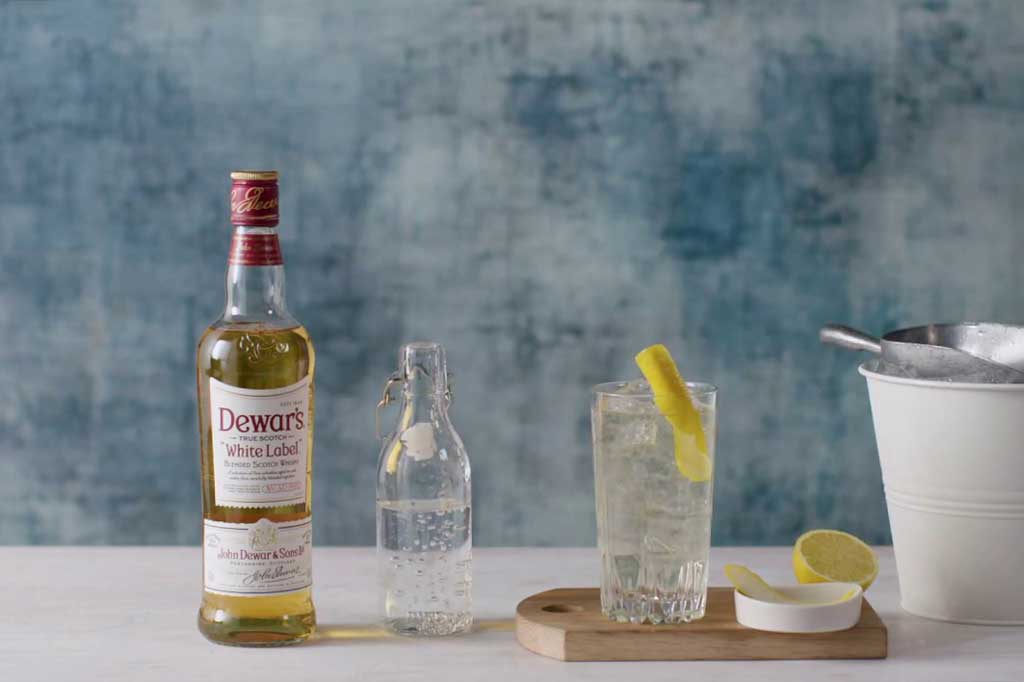
Dewar’s White Label cocktail suggestions
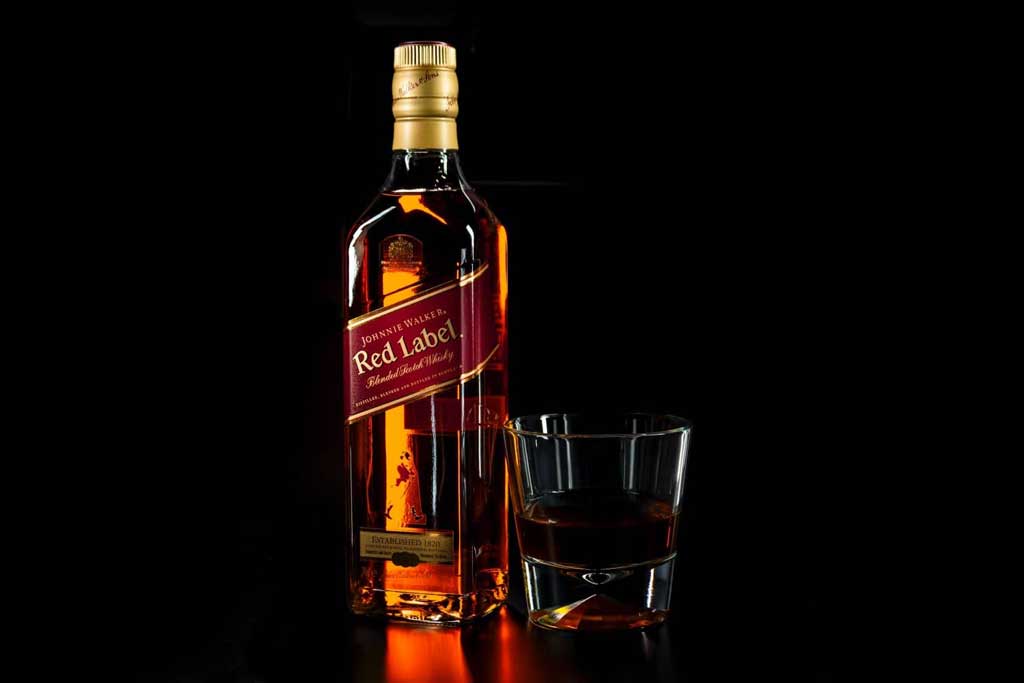
A closer look at Johnnie Walker Red Label
Having previously reviewed Johnnie Walker Red Label, I’m curious to see how it tastes back-to-back with the Dewar’s White Label. If you’re new to whisky, I can’t urge you enough to sample and compare different bottles like this in succession – it really highlights their differences and characteristics, no matter how well you think you know them!
Quick disclaimer, JW Red Label is primarily a mixer-style blend, intended for soda highballs or cocktail mixing. Made from around 30 single malt and grain whiskies, it’s not really designed for sipping neat.
Nose: Out the bottle, Red Label hits you with sweet and smoky aromas that tantalize the senses. The first impression is one of heather and honey blended with sweet citrus peels and gentle smoke. There’s also some peppery heat in there, with a hint of rum spice in the background. Further in, I smell subtle notes of oak. All classic Johnnie Walker smells really.
Palate: On the palate, Johnnie Walker Red Label is immediately smoky, oaky and leathery. Compared to the Dewar’s, it’s more assertive with it’s smokiness and feels comparatively spicier. For this bottle, I’m inclined to add water to try and ‘open it up’ a little. Doing so, the heat is more subdued with more sweetness coming through.
On my second sip, I get sweeter notes of toffee and honey. The water has certainly helped, but there’s still an underlying pepperiness to this whisky. On the mid-palate, there’s some pleasant notes of cinnamon and tobacco, followed by a little peat. I’d say it’s peatier than the Dewar’s but nothing crazy. Overall, the taste is okay, with a simple profile of smoke and sweetness.
Mouthfeel: Johnnie Walker Red Label has a light-bodied mouthfeel, with a hint of warmth to it. Without the addition of water, the whisky is not overly coating or drying on the palate, though adding water helps release the more subtle notes. For me, it’s pretty thin in texture, though there’s an underlying pepperiness that provides a gentle tingle on the tongue.
Finish: The finish of Johnnie Walker Red Label is smoky and long. The smoke is accompanied by a subtle sweetness, with hints of oak, cinnamon and tobacco lingering in the background. There’s an underlying pepperiness that tingles on the tongue and leaves a gentle warmth in your throat. As it fades away, there’re also lingering hints of heather honey, citrus peels and rum spice that dance on the nose for a few moments after sipping. All in all, it has a reasonable finish that’s enjoyable but not particularly complex.
Price: Overall, Johnnie Walker Red Label offers an expectedly ‘average’ drinking experience. For just over £20 a bottle, it’d be foolish to expect any great depth or complexity. As much as I enjoy Johnnie Walker’s blends, their Red Label isn’t something I’d drink on it’s own. However, the price is certainly attractive for for an inexpensive blend to enjoy with friends in cocktails or making highballs.
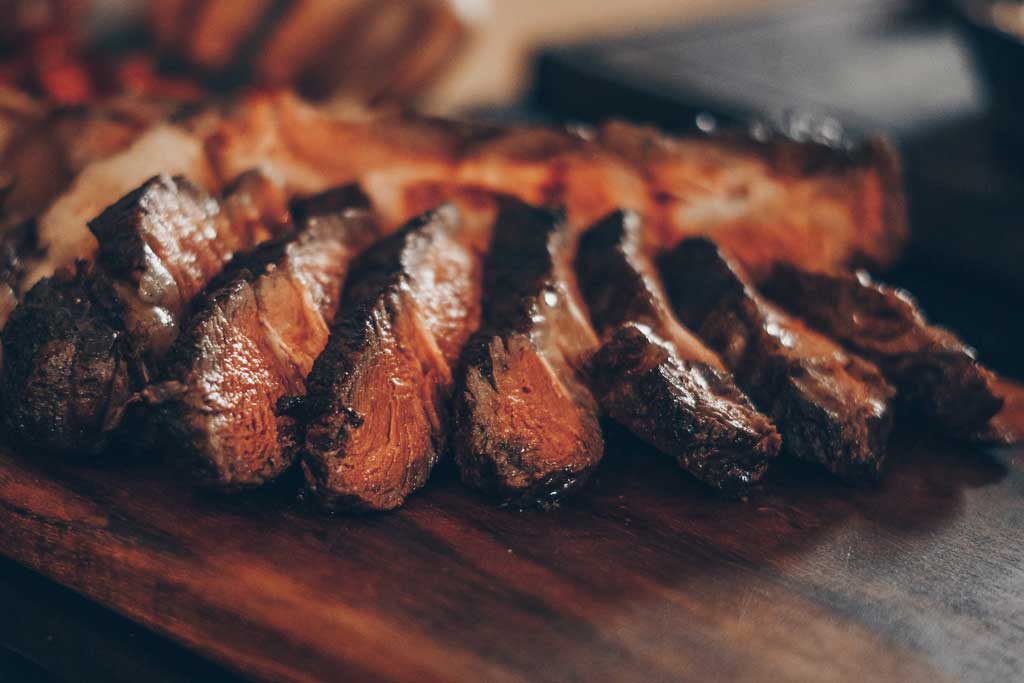
Johnnie Walker Red Label food pairings
For starters, try serving it with a vegetable-based dish such as roasted cauliflower or grilled asparagus. Its smoky notes bring out the sweetness of the vegetables, while its pepperiness makes for an interesting contrast. Alternatively, you could pair it with a salad of mixed greens and cheese; the whisky’s smokiness brings out the nuttiness in the cheese, while its sweet and spicy notes add depth to the salad.
For a main dish, go for something rich but slightly sweet such as pork tenderloin cooked in a whisky sauce or slow-cooked ribs served with honey and whisky glaze. The whisky adds a unique flavour profile to these dishes that will make them stand out from other meals. You can also try pairing Johnnie Walker Red Label with steak – its pepperiness cuts through the richness of the steak while its smokiness adds an extra layer of depth to its flavour.
For dessert, Johnnie Walker Red Label shines when paired with chocolate based puddings such as mousse or cake. The whisky’s smokiness complements the sweetness of the chocolate and brings out its richness, while its spiciness adds an interesting twist. You can also pair it with fruits such as apples and pears – their sweetness is balanced by the whisky’s pepperiness, resulting in a delicious end to any meal.
Johnnie Walker Red Label Cocktail suggestions
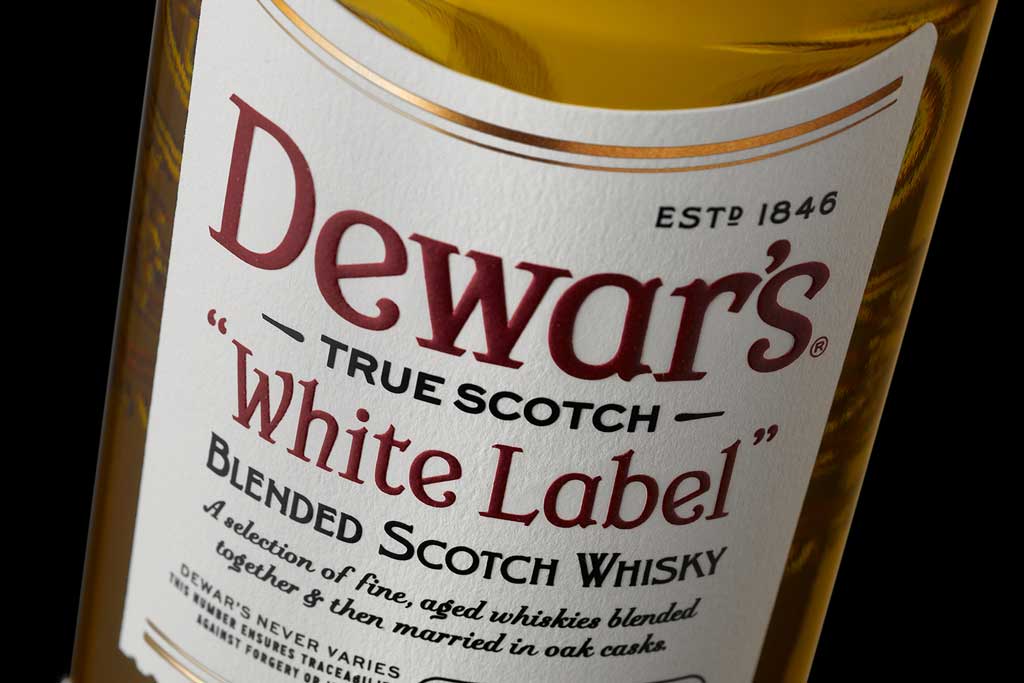
Final thoughts
Comparing Dewar’s White Label vs Johnnie Walker Red Label, was an interesting match-up between these two entry-level bottles. For me, the Dewar’s was much easier to drink with its overall sweet and fruity taste. For me, it lacked any harshness and had little to no burn which was unexpected. Its apple and pear flavours, along with its smooth, creamy mouthfeel makes it a surprisingly smooth Scotch blend for its age and price.
On the other hand, Johnnie Walker Red Label an incredibly inexpensive blend that offers an expectedly ‘average’ drinking experience. It has smoky notes combined with hints of oak, cinnamon, pepperiness and sweetness that make it preferable in cocktails. I’d suggest splurging the extra money and get the Black Label bottle if I wanted a better Johnnie Walker for sipping neat.
Author’s pick
Between the two, I’d choose Dewar’s White Label. It’s a simple but tasty blend of fruit, sweetness and mild smoke. Considering it’s entry-level positioning, it’s got reasonable depth and can be enjoyed on it’s own as a low cost daily sipper. Personally, I found it the better of the two as a stand-alone dram.








